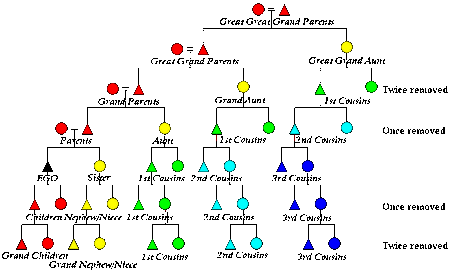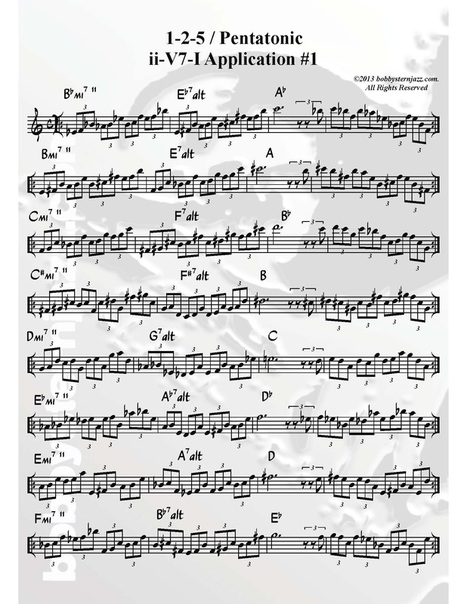
This time it's 1-2-5 and it's dear cousins, Pentatonic and Perfect 4th (P4th), that gets our attention.
The notes of a Maj. pentatonic scale are formed by two 1-2-5 patterns a whole tone apart (C-D-G + D-E-A = C-D-E-G-A).
The close relationship to these 1-2-5 patterns and the pentatonic scale, as well as the pentatonic scale and the interval of a perfect fourth (E-A-D-G-C) is a somewhat obvious one.
A 1-2-5 pattern contains at least one P4th, and in it's first inversion (D-G-C) contains those final two consecutive P4ths.
Starting with Eb-F-Bb, or 1(eleventh)-2(fifth)-5(root), next pattern up a P4th, Ab-Bb-Eb, or
1(seventh)-2(root)-5(eleventh), then up a whole step, Bb-C-F, 1(root)-2(ninth)-5(fifth), and the fourth grouping, Eb-F-Bb, is an octave above the first group. These four 1-2-5 patterns contain all the notes of an Ab Maj. Pentatonic scale (Ab-Bb-C-Eb-F). When played over a Bb, this gives you Bb7sus4 sound, which functions fine as a Bb-7, or ii chord.
Measure two is a copy of the first, transposed up a half step, giving us all the notes of an A Maj. Pentatonic scale (A-B-C#-E-F#), this time played over an Eb7, as the V7 chord. This gives us an Eb altered scale (7th mode of E Melodic Minor) permutation, which includes the b5-b13-b7-b9 & #9 of the V7 chord.
The line resolves neatly to the third of the Maj. tonic chord in measure three. In measure four, over the tonic, an ornamental riff is played using 1-2-5 patterns and inversions, again on an Ab Maj. Pentatonic.
The breakdown , after the pickup, is: 2(3)-1(2)-5b(6), 2-1-5b, 1(2)-2(3)-5(6), 1(5)-5b(2)-2b(6) (2 consecutive P4ths).
Because of the key and range factor, octave shifts as well as pattern inversions are used throughout most of the exercise.
The entire ii-V7-I progression is played using 2 "one -two-fived" pentatonic scales, a minor second apart.

 RSS Feed
RSS Feed









